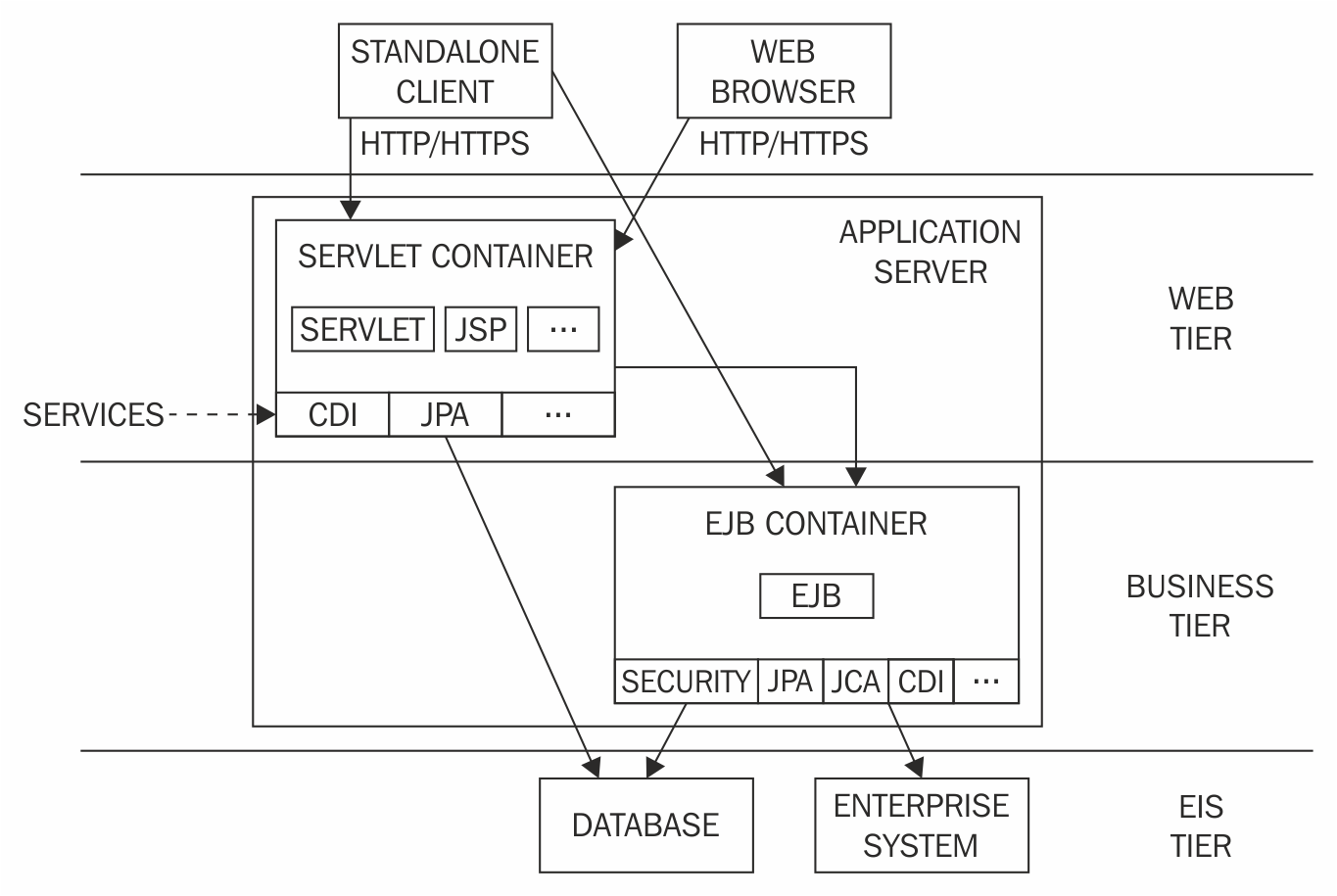Traditionally, business applications written in the Java EE technology were based on a three-tier architectures, web, business, and enterprise information system tier:
Application server implements web and business tiers. It can be accessed by various types of clients
Web components, such as Servlets, JSPs, or JAX-RS, allow for the implementation of the web layer. They are able to respond to the HTTP requests from different kinds of clients. For example, JSF may be used to create web user interfaces in a convenient way, whereas the JAX-RS API allows for the implementation of RESTful services.
The business layer is implemented by EJBs, pooled POJO-based components that allow for the easy implementation of transactional operations and that can provide a wide array of capabilities such as security, database, external system integration, remote access, or dependency injection.
Although the bird's-eye view architecture is quite straightforward, it is very elastic and allows for the implementation of a wide array of enterprise applications. Moreover, the standard has evolved throughout the years, providing tools for a wide array enterprise usage.
If you take a look at Java EE specification (Further Reading, link 1) you will be able to see all the specifications that are part of the standard. The shared amount of them may be intimidating at first slight. It should be noted that, in most cases, you will have to deal with only a subset of those. On the other hand, when your applications require any kind of enterprise functionality, it is highly probable that the needed tool is already there for you—integrated with the whole platform and easy to use.



 Free Chapter
Free Chapter



